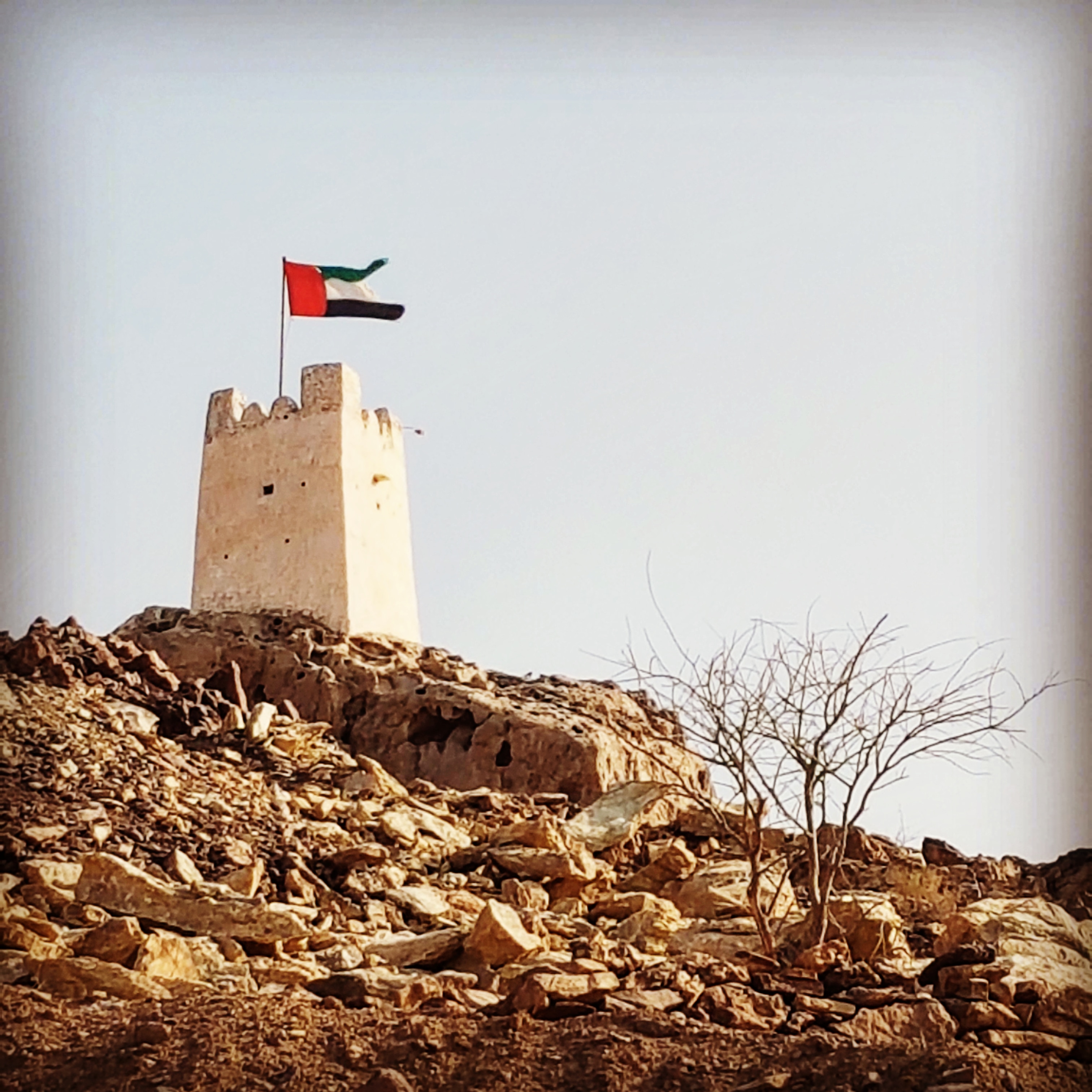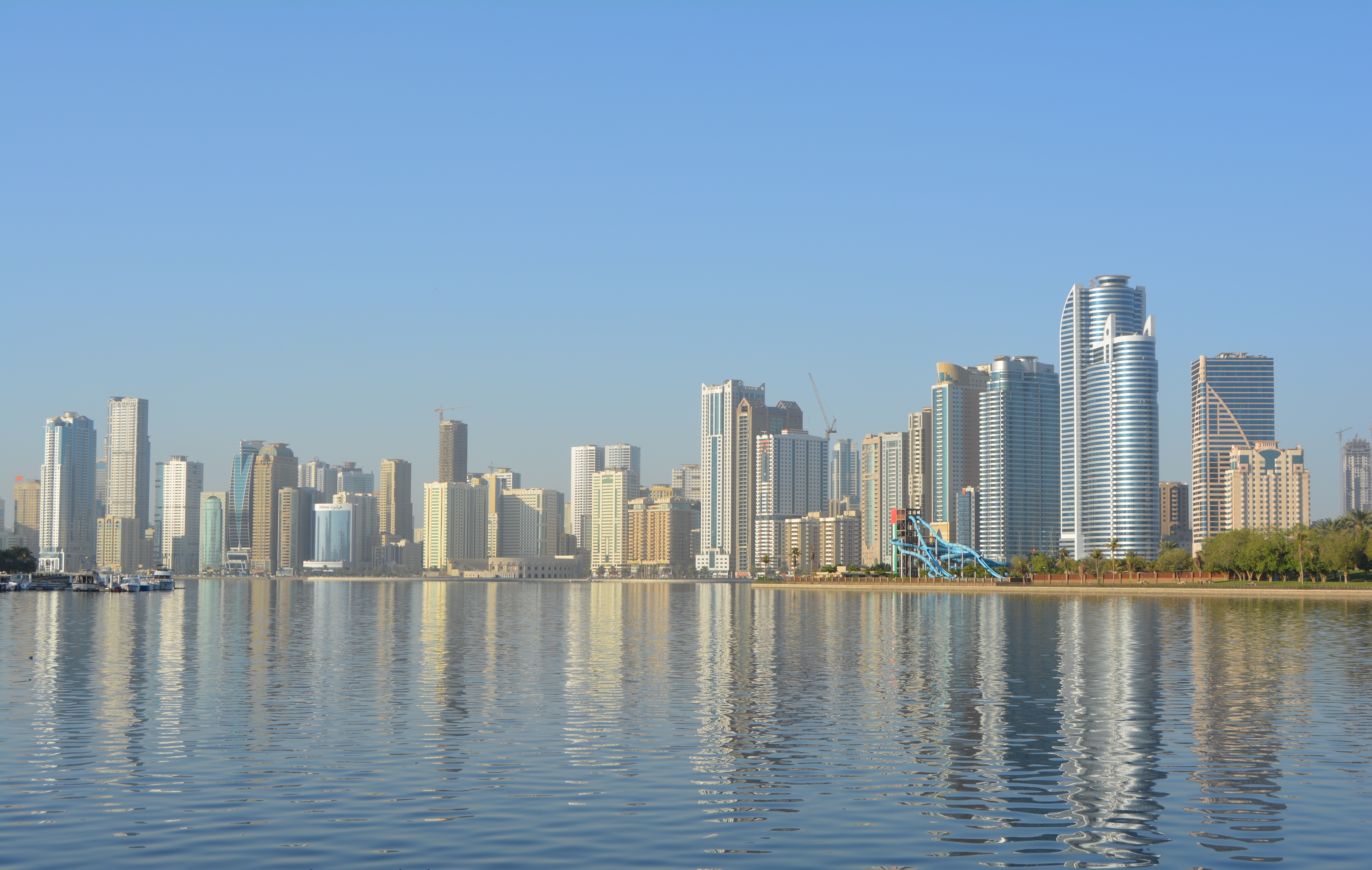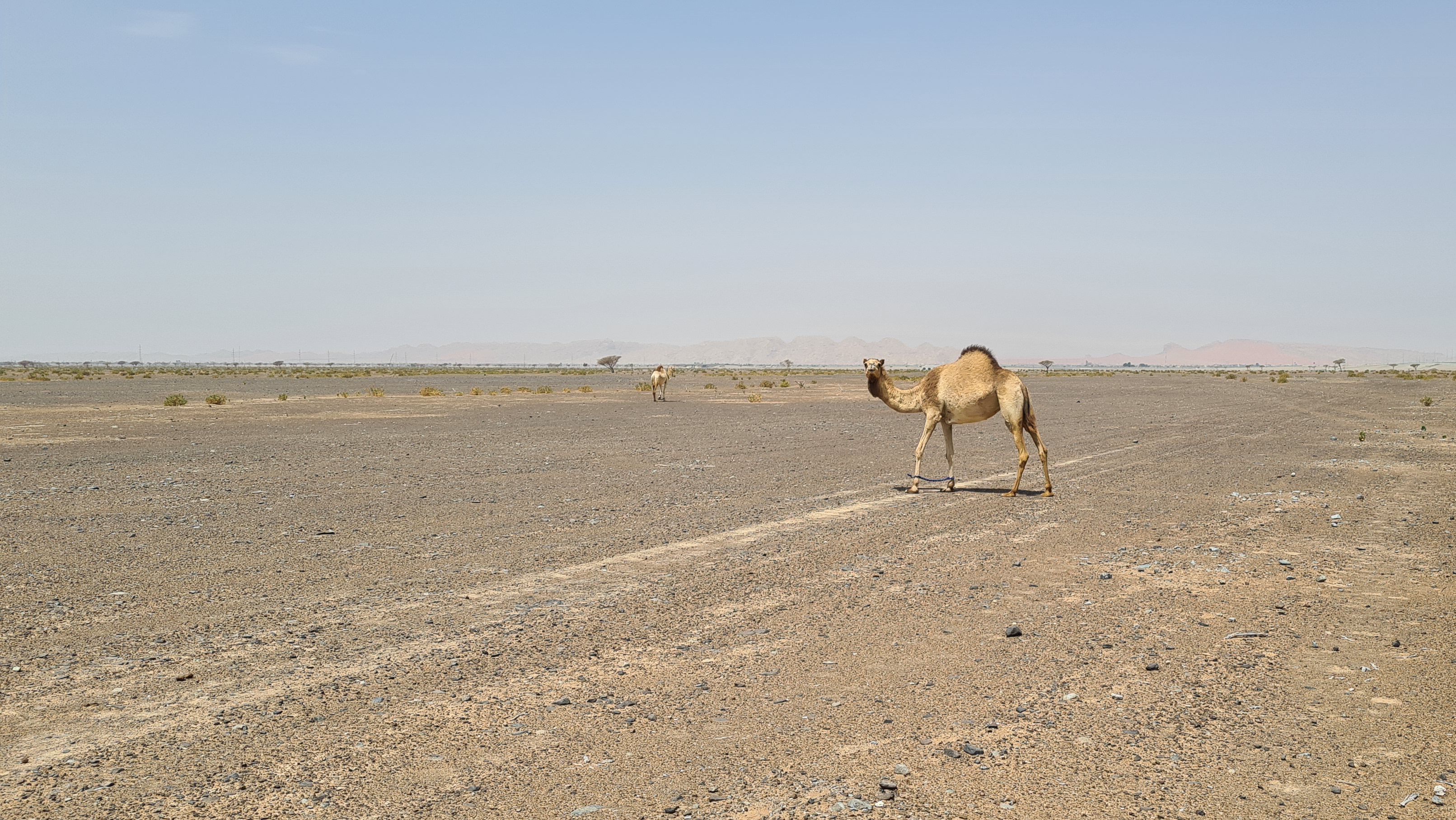|
House Of Al-Nuaimi
The Na'im () (singular Al Nuaimi ) is an Arab tribe in the United Arab Emirates. The tribe is also present in other gulf countries. The Na'im is divided into three sections, the Al Bu Kharaiban, the Khawatir and the Al Bu Shamis (singular Al Shamsi). It is from the former section that the current Rulers of the Emirate of Ajman are drawn. Of the three sections, the Al Bu Shamis has become virtually independent and associated closely with the Al Bu Falasa of Dubai. The traditional heart of Na'im territory was the oasis town of Buraimi and nearby Al Ain, where Na'im expansion came at the expense of the Dhawahir tribe, but also rubbed up against the Bani Yas and the allied Manasir. Although the Na'im were linked to the growing Wahhabi influence in the Buraimi area and adopted the doctrine, they allied with other forces to evict the Wahhabis from Buraimi and subsequently occupied many of the forts around Buraimi. Origins In 1818, according to the 'British Assistant Political ... [...More Info...] [...Related Items...] OR: [Wikipedia] [Google] [Baidu] |
Arabs
The Arabs (singular: Arab; singular ar, عَرَبِيٌّ, DIN 31635: , , plural ar, عَرَب, DIN 31635, DIN 31635: , Arabic pronunciation: ), also known as the Arab people, are an ethnic group mainly inhabiting the Arab world in Western Asia, North Africa, the Horn of Africa, and the western List of islands in the Indian Ocean, Indian Ocean islands (including the Comoros). An Arab diaspora is also present around the world in significant numbers, most notably in the Americas, Western Europe, Arabs in Turkey, Turkey, Arab Indonesians, Indonesia, and Iranian Arabs, Iran. In modern usage, the term "Arab" tends to refer to those who both Arab identity, carry that ethnic identity and speak Arabic as their native language. This contrasts with the narrower traditional definition, which refers to the descendants of the tribes of Arabia. The religion of Islam was developed in Arabia, and Classical Arabic serves as the language of Islamic literature. 93 percent of Arabs are Muslims ... [...More Info...] [...Related Items...] OR: [Wikipedia] [Google] [Baidu] |
Sharjah
Sharjah (; ar, ٱلشَّارقَة ', Gulf Arabic: ''aš-Šārja'') is the third-most populous city in the United Arab Emirates, after Dubai and Abu Dhabi, forming part of the Dubai-Sharjah-Ajman metropolitan area. Sharjah is the capital of the eponymous emirate. The emirate shares legal, political, military and economic functions with the other emirates of the UAE within a federal framework, although each emirate has jurisdiction over some functions such as civil law enforcement and provision and upkeep of local facilities. Sharjah has been ruled by the Al Qasimi dynasty since the 18th century. The city is a centre for culture and industry, and alone contributes 7.4% of the GDP of the United Arab Emirates. The city covers an approximate area of 235 km2 and has a population of over 800,000 (2008). The sale or consumption of alcoholic beverages is prohibited in the emirate of Sharjah without possession of an alcohol licence and alcohol is not served in hotels, restaura ... [...More Info...] [...Related Items...] OR: [Wikipedia] [Google] [Baidu] |
Zayed Bin Khalifa Al Nahyan
Sheikh Zayed bin Khalifa Al Nahyan ( ar, زايد بن خليفة آل نهيان; 1835 – 18 May 1909), also known as Zayed the Great or Zayed the First was the Sheikh of Abu Dhabi from 1855 to his death in 1909. He was the grandfather and namesake of Sheikh Zayed bin Sultan, founder of the United Arab Emirates. Biography He was born in the emirate of Abu Dhabi, in what was then called Trucial Oman, sometime around 1840. He lived much of his early life with the Bedouin of Abu Dhabi. He was made Ruler of Abu Dhabi after the deposition of his cousin, Sheikh Saeed bin Tahnun, in 1855. He ruled for 54 years, until his death in 1909. He had a wife called Maitha Almansoori. Early in his rule, Zayed guided Abu Dhabi through a series of conflicts with the Emirate of Sharjah. In 1868, during an armed clash with Sharjah's forces, he advanced ahead of his troops and challenged the Ruler of Sharjah, Sheikh Khalid bin Sultan Al Qasimi, to single combat. Zayed wounded Khalid mortally a ... [...More Info...] [...Related Items...] OR: [Wikipedia] [Google] [Baidu] |
Al Batinah Region
Al-Bāţinah ( ar, ٱلْبَاطِنَة) was one of the regions ''( Mintaqat)'' of Oman. On 28 October 2011, Al-Batinah Region was split into Al Batinah North Governorate and Al Batinah South Governorate. The region occupied an important location on the coast of Gulf of Oman. It lay between Khatmat Malahah in the north and Ras al-Hamra in the south, and confined between Al Hajar Mountains in the west and the Gulf of Oman in the east. Most of Oman's population were in that region, because of the green plains between the Hajar Mountains and the sea. Al Batinah Region contained the largest number of provinces (''wilayat''), numbering twelve: Sohar, Ar Rustaq, Shinas, Liwa, Saham, Al-Khaburah, Suwayq, Nakhal, Wadi Al Maawil, Al Awabi, Al-Musannah, Barka. Suwayq is considered as the biggest wilayah in the Batinah region. Sohar was the regional capital. It is a populous city with a corniche, fish souq and numerous mosques. Historic maps of Oman showing Batinah WELLSTED(1 ... [...More Info...] [...Related Items...] OR: [Wikipedia] [Google] [Baidu] |
Wadi
Wadi ( ar, وَادِي, wādī), alternatively ''wād'' ( ar, وَاد), North African Arabic Oued, is the Arabic term traditionally referring to a valley. In some instances, it may refer to a wet (ephemeral) riverbed that contains water only when heavy rain occurs. Etymology The term ' is very widely found in Arabic toponyms. Some Spanish toponyms are derived from Andalusian Arabic where ' was used to mean a permanent river, for example: Guadalcanal from ''wādī al-qanāl'' ( ar, وَادِي الْقَنَال, "river of refreshment stalls"), Guadalajara from ''wādī al-ḥijārah'' ( ar, وَادِي الْحِجَارَة, "river of stones"), or Guadalquivir, from ''al-wādī al-kabīr'' ( ar, اَلْوَادِي الْكَبِير, "the great river"). General morphology and processes Wadis are located on gently sloping, nearly flat parts of deserts; commonly they begin on the distal portions of alluvial fans and extend to inland sabkhas or dry lakes. In basin and r ... [...More Info...] [...Related Items...] OR: [Wikipedia] [Google] [Baidu] |
Bani Qitab
The Bani Qitab ( ar, بني كتب) is a tribe of the United Arab Emirates (UAE). The singular form of the name, Al Ketbi, is a common family name in the Northern UAE today. Consisting of a settled southern section and a nomadic northern section, the tribe was long influential in the conduct of affairs in the interior of the Trucial States. The Northern branch mostly settled in the inland towns of Dhaid and Al Falayah. Settlement The tribe consisted, at the turn of the 19th century, of some 2,100 nomadic Bedouin (of whom some 600 were fighting men) and 2,700 settled people. The Bedouin ''dar'', or district, of the Bani Qitab stretched from South of the Buraimi oasis to the Eastern foothills of the Hajar Mountains, the Jiri plain to the North of Sharjah and the fertile area around Sharjah's inland oasis town of Dhaid. The Southern Bani Qitab, some 500 households, settled around the village of Aflaj Bani Qitab in the Dhahirah area. Over time these separated from the Northern secti ... [...More Info...] [...Related Items...] OR: [Wikipedia] [Google] [Baidu] |
Masfout
Masfout is a village that forms part of the eponymous exclave of Masfout in Ajman, one of the seven emirates forming the United Arab Emirates. It is surrounded by Ras Al Khaimah, the Dubai exclave of Hatta and Oman (Mahdha Wilayat of Al Buraimi Governorate). It is only accessible from Ajman itself by crossing territories of Sharjah, Ras Al Khaimah, and Oman. At the census of 2017 the city had a population 8988 on an area of 86.59 km², which corresponds to a population density of 103.8 per km². The village has a number of government facilities and municipal centres, including a dedicated courthouse built in 2017. The 13,500 square metre Waraqa Park surrounds the former house of the founder of Ajman, Sheikh Rashid bin Humaid Al Nuaimi. In 2017 the Masfout Heights Resort Project was announced, intended as a mixed use hotel and tourism project. Digging water wells in the exclave was banned by the Ajman government as water depletion became an issue with over 80 unregulated we ... [...More Info...] [...Related Items...] OR: [Wikipedia] [Google] [Baidu] |
Masfout Fort
Masfout is a village that forms part of the eponymous exclave of Masfout in Ajman, one of the seven emirates forming the United Arab Emirates. It is surrounded by Ras Al Khaimah, the Dubai exclave of Hatta and Oman (Mahdha Wilayat of Al Buraimi Governorate). It is only accessible from Ajman itself by crossing territories of Sharjah, Ras Al Khaimah, and Oman. At the census of 2017 the city had a population 8988 on an area of 86.59 km², which corresponds to a population density of 103.8 per km². The village has a number of government facilities and municipal centres, including a dedicated courthouse built in 2017. The 13,500 square metre Waraqa Park surrounds the former house of the founder of Ajman, Sheikh Rashid bin Humaid Al Nuaimi. In 2017 the Masfout Heights Resort Project was announced, intended as a mixed use hotel and tourism project. Digging water wells in the exclave was banned by the Ajman government as water depletion became an issue with over 80 unregulated we ... [...More Info...] [...Related Items...] OR: [Wikipedia] [Google] [Baidu] |
Jiri Plain
The Jiri plain is an area of gravel plain extending across areas of Southern Ras Al Khaimah, Eastern Sharjah and Western Fujairah, United Arab Emirates (UAE). The area, some 15 miles in length and 8 miles in breadth, is triangulated with the villages of Khatt and Habhab to the North; Adhen to the East and Dhaid to the South. To the West the plain is enclosed by sand dunes. The soil of the Jiri plain is darkened by debris brought down by seasonal waters from the mountains, which helps to define its rich, loamy character and high carbonate content (from the outwash of Cretaceous limestone). The plan is thickly populated by acacia (''Acacia tortilis'') and ghaf trees, as well as tamarisk and other hardy varieties. A number of deep aquifers run under the plain. The settled population of the area at the time of Lorimer's 1915 ''Gazetteer of the Persian Gulf'' was some 1,000 strong, mostly members of the tribes of Awanat, Mazari, Naqbiyin, Sharqiyin (in the area of Wadi Ham) and ... [...More Info...] [...Related Items...] OR: [Wikipedia] [Google] [Baidu] |
Bedouin
The Bedouin, Beduin, or Bedu (; , singular ) are nomadic Arab tribes who have historically inhabited the desert regions in the Arabian Peninsula, North Africa, the Levant, and Mesopotamia. The Bedouin originated in the Syrian Desert and Arabian Desert but spread across the rest of the Arab world in West Asia and North Africa after the spread of Islam. The English word ''bedouin'' comes from the Arabic ''badawī'', which means "desert dweller", and is traditionally contrasted with ''ḥāḍir'', the term for sedentary people. Bedouin territory stretches from the vast deserts of North Africa to the rocky sands of the Middle East. They are traditionally divided into tribes, or clans (known in Arabic as ''ʿašāʾir''; or ''qabāʾil'' ), and historically share a common culture of herding camels and goats. The vast majority of Bedouins adhere to Islam, although there are some fewer numbers of Christian Bedouins present in the Fertile Crescent. Bedouins have been referred ... [...More Info...] [...Related Items...] OR: [Wikipedia] [Google] [Baidu] |
Oman
Oman ( ; ar, عُمَان ' ), officially the Sultanate of Oman ( ar, سلْطنةُ عُمان ), is an Arabian country located in southwestern Asia. It is situated on the southeastern coast of the Arabian Peninsula, and spans the mouth of the Persian Gulf. Oman shares land borders with Saudi Arabia, the United Arab Emirates, and Yemen, while sharing Maritime boundary, maritime borders with Iran and Pakistan. The coast is formed by the Arabian Sea on the southeast, and the Gulf of Oman on the northeast. The Madha and Musandam Governorate, Musandam exclaves are surrounded by the United Arab Emirates on their land borders, with the Strait of Hormuz (which it shares with Iran) and the Gulf of Oman forming Musandam's coastal boundaries. Muscat is the nation's capital and largest city. From the 17th century, the Omani Sultanate was Omani Empire, an empire, vying with the Portuguese Empire, Portuguese and British Empire, British empires for influence in the Persian Gulf and Indian ... [...More Info...] [...Related Items...] OR: [Wikipedia] [Google] [Baidu] |
Ad Dhahirah Governorate
Al Dhahirah (; ''Muḥāfaẓat aẓ-Ẓāhirah'') is one of the governorates (''muhafazah'') of Oman. It was previously a region (''mintaqah''). It became a governorate on 28 October 2011. Provinces Adh Dhahirah Governorate consists of three provinces (wilayat): *Ibri *Yanqul *Dhank Regional Subdivision Review before 2007 Until October 2006, two more former wilayat (Provinces) were part of this region: Al Buraymi and Mahdha. Al Buraimi Governorate was created from them in October 2006, as a new governorate. As well, a third wilaya (Province), of Al Sunaynah was created from rural parts of Al Buraymi and Mahdha Mahdah ( ar, مَحْضَة, Maḥḍah, or '' Wilāyat Maḥḍah'' (), is an Omani territory north of the town of al Buraimi which borders the emirates of Sharjah, Ajman and Dubai. It was previously necessary to pass through Mahdah when travel .... Demographics References Governorates of Oman {{Oman-geo-stub ... [...More Info...] [...Related Items...] OR: [Wikipedia] [Google] [Baidu] |




